TL;DR
➡ 2025 UPDATE: The most important reason behind hair transplant failures as of 2025 is Black Market Crisis and Global Trends such as rising costs
➡ According to ISHRS’s research, the success rate of a patient’s hair transplant is 68.2% after a single surgery and 96.8% following their second hair restoration procedure.
- 3.3% of patients had 3 or more surgeries to achieve the desired result.
➡ ISHRS member surgeons reported that up to 25% of their cases involved repairs resulting from a prior hair transplant done in the hair transplant black market.
➡ Hair transplants fail due to patients not being eligible for hair transplants, lack of experience and expertise on the clinic and surgeon side, or lack of maintenance following the surgery by the patient.
First, read the following story from the official ISHRS website to better understand the importance of the topic I’ll cover in this article:
The first meeting with them was in the afternoon before the operation and, after selling me some services that I would later never receive, we made an appointment for the next day to perform the surgery in a hospital. They promised me that I will see the surgeon the next day before starting the operation and I decided to trust him.
I only paid €868 because I didn’t want a hotel. I know, cheap becomes expensive. There, contrary to what I had been promised, no surgeon was waiting for me, only translators with great social skills and a group of teenagers who would be the ones who would carry out 100% of the surgery.
They unnecessarily overharvested my donor area and damaged the native hair by putting some follicles on top of others.
They devastated my hair with a complete lack of professionalism. I couldn’t regret anymore the fateful decision to stay there and let them make a mess of my natural hair that is now ruined for life. It has been a traumatic moment that I have to deal with.
Victim of Black Market Hair Transplant Clinic Shares His Story – fightthefight.ishrs.org
When it comes to medical operations, such as hair transplant surgeries, there is no room for failure.
However, it happens even in 2025 despite many improved hair restoration techniques and technologies.
Once in a while, you’ll hear from people around you or read on the internet about someone who had his third hair transplant because the first two were unsuccessful.
Such cases should not exist and can be avoided easily by expert physicians and responsible patients who know what they’re doing.
In this article, I’ll go over:
- The success rate of hair transplant surgeries,
- Reasons for failure in hair transplantation,
- 3 common ways hair transplants fail,
- and How you can eliminate the chances of failure in your hair transplantation.
Hopefully, by the end of this article, you’ll know everything to ensure hair transplant success.
Let’s start by answering a question we’ve already answered, but in more detail:
Table of Contents
Is It Possible for a Hair Transplant to Fail?
Yes, hair transplantation can fail.
And, based on your perspective, every hair transplantation fails to an extent.
After every hair transplant surgery, you lose a certain amount of the planted grafts. So we need to define “success” and “failure”:
The graft survival rate after six months to a year makes the whole operation a failure or a success. You can consider your hair transplantation a success if the majority of the planted grafts survived and your hair looks the way you wanted it to be: Natural, not like a Grass Head.
And, of course, if the majority of grafts didn’t survive after the surgery, and your hair looks the same or worse than before, it can be considered a failure.
What is the failure rate of hair transplants?
If you define hair transplant failure as not seeing an 80% or more survival rate in planted grafts, the failure rate for the average hair transplant (traditional FUE or FUT) would be between 5-10%.
But, if you define failure as not achieving complete success in desired looks with a single surgery, the failure rate of hair transplant surgeries would be around 43%, according to ISHRS research which revealed that only 57% of patients achieve their desired results after a single hair transplant operation.
The exact rate depends on the surgeon’s knowledge and experience, technique, graft count, medicine and supplements used following the surgery, and whether or not you lean towards a healthy lifestyle.
What happens if a hair transplant fails?
Firstly, contact your clinic and preferably a dermatologist if your transplanted hair is falling out. A dermatologist can help you understand the reason behind your hair transplant failure and intervene immediately, possibly saving your hair transplant.
If it’s too late and you end up with a deformed hairline or less dense hair than you’d prefer, you should get a secondary hair transplant, which is much more common than you’d think.
Of course, before moving on with the second surgery, ensure your surgeon understands the reason behind the failure following the first hair transplant and takes precautions accordingly.
5 Causes a Failure in Hair Transplantation
As I’ve said, your hair transplant’s success or failure will depend on the grafts that survive after a while.
And the survival rate of the planted grafts is determined by three main actors in all types of hair transplants:
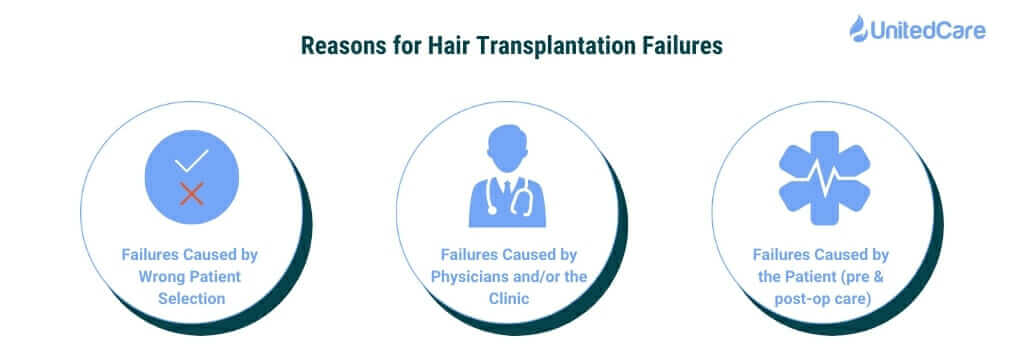
1- Black Market Crisis of 2025
Do you remember the story I quoted from ISHRS at the beginning of this article?
The rise of illegal clinics as of 2025 is a very serious issue. Unfortunately, Thousands of patients have been robbed of their money along with their limited hair transplant donor supply.
ISHRS data shows that 5.4% of repair cases come from black-market clinics, with Turkey being the main location for botched procedures.
Can you imagine getting a hair transplant from a real surgeon just for a €868? It is impossible. As in the story, a bunch of teenagers performing hair transplants for such a low price in black market clinics.
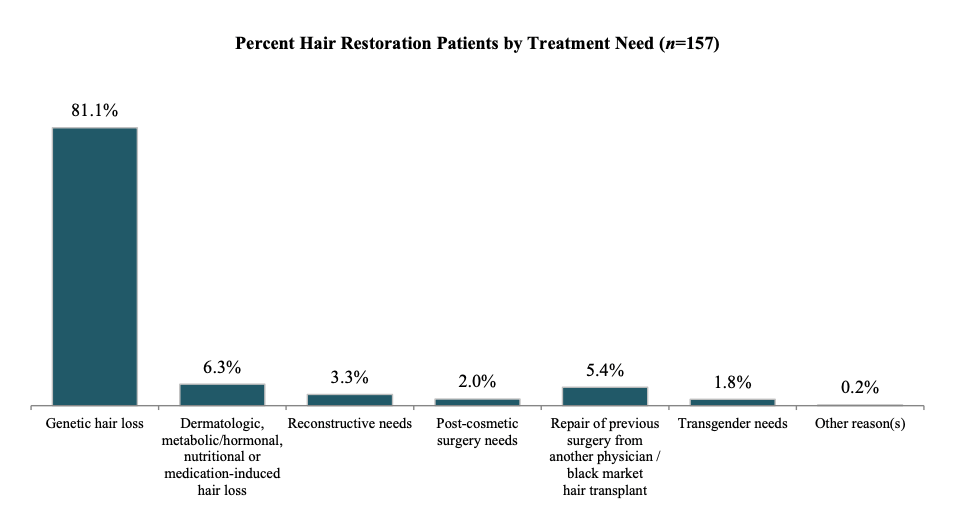
These unregulated establishments, often operating in countries like Turkey, Egypt, Iran, and India lure patients with promises of low-cost procedures and quick results. However, many of these clinics are staffed by unlicensed individuals lacking proper medical training.
As the demand for hair restoration continues to grow, it’s crucial for prospective patients to conduct thorough research and choose reputable clinics with certified professionals.
That doesn’t mean all clinics in these countries are bad. I, personally also operate my clinic in Istanbul, Turkey accepting just one patient a day and performing surgical parts of the hair restoration surgery on my own.
Just make sure to conduct thorough research and choose reputable clinics with certified professionals. If you want to talk to me in person for a hair restoration consultation, you can reach my assistant here.
2- Global Trends in 2025
Depending on my own experience, I can state that demands for high-density transplants are on the rise as of 2025.
People come to my clinic in Turkey once and hope to solve hair loss issues with a single mega-session hair transplant like 4500 or 5000 grafts.
However, there is always a limit. Going above that limit means losing grafts since we harm the scalp with incisions and implantations. The skin can’t heal fully and support grafts after a threshold causing limited donor supply to be lost.
In addition, global inflation along with local inflations cause hair transplant costs to sharply rise in 2025.
Many clinics prefer cost-cutting methods such as employing inexperienced crews and paying them much less than experienced technicians.
Some of the clinics don’t have their team. They do the marketing part, sell hair transplants to customers, and then a random crew that also operates in various other clinics to perform the surgery.
Indeed, hair transplantation is a real organ transplantation requiring proper organ transplant solutions to be used while grafts are out of the body. However, they’re expensive. More and more clinics use cheap ringer lactate solutions.
3- Patient Eligibility
Are you eligible to get a hair transplant?
Not everyone that loses hair is eligible for hair transplantation surgeries, yet, some clinics are either unable to determine eligibility or just ignore it to do the operation and get paid.
If you’re not the right candidate for a hair transplant, the result of your hair transplant surgery will most likely not be the way you’d expect it, and there’s a high chance your planted grafts will fall out.
Here are some situations where the patient isn’t eligible to have a hair transplant surgery:
- The balding area is too large, requires too many individual follicles,
- The donor area is too small, limits the number of hair grafts that can be harvested,
- Patients with active scarring alopecia,
- Younger patients with early, evolving balding (if the hair loss is not stable, a second hair transplant surgery would be needed soon after the initial surgery.)
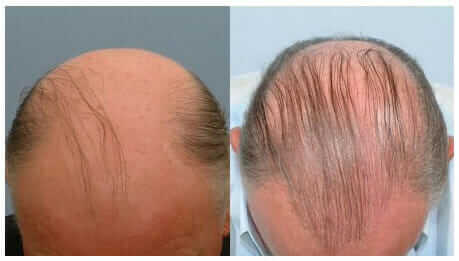
4- Physician and/or the Clinic
Suppose you own a business targeting low-segment customers. And, you know that new techniques enhance the quality of work by 10-15%, but they also increase the cost by 30-35%. What would you do?
The low-cost clinics cut everything to reduce costs, ignoring patients’ ultimate well-being. Next time you think about having a hair transplant think about what is more precious;
- 1000$?
- Time?
- Health?
- Limited Donor Area?
To reduce the price, It is common for clinics to employ inexperienced physicians with sometimes no medical background to do hair transplant surgeries.
And it is also common for these inexperienced physicians to adopt out-of-date or simply wrong and harmful medical procedures.
After a surgical procedure full of unhealthy practices, it’s almost inevitable for you to lose many of the planted grafts and even have an unnatural hairline or visible scars.
Some failures that are caused by the hair restoration surgeons and the clinics are as follows:
- No doctor involvement in the surgery: Technicians conducting the operation without supervision can’t deal with complications.
- Transection rate: Transection is the amputation of single or multiple hair follicles. Transection rate is % of follicles that are transected during the operation.
The rate depends on the experience of the operator. The least skilled one can have transection rate between 20-50% meaning almost half of the precious and limited grafts are amputated.
Some clinics use bigger punches to extract grafts to reduce the transection rate without decreasing the surgery speed (speed is essential for “hair mill” clinics), extending the healing period and leaving scars.
💡 A skilled dermatologist surgeon has a transection rate of 1-2% and transplants most grafts successfully.
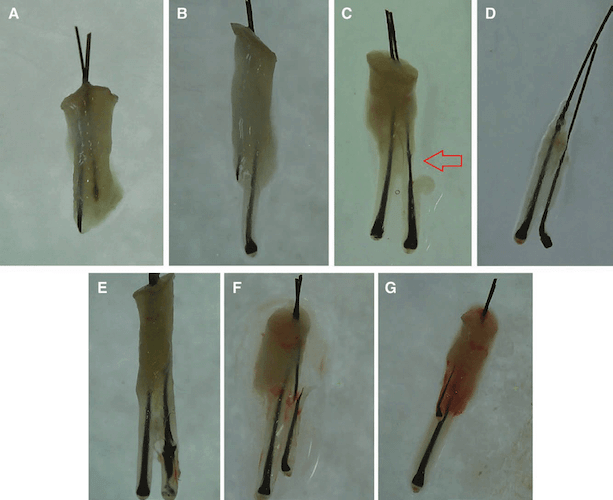
- Trying to plant too many grafts: Which causes trauma on the scalp and increases the chance of inflammation, necrosis, hair transplant rejection, and future hair loss.
- Inefficient use of tools: The graft harvesting and plantation process should be done carefully by a well-educated, experienced team with physician supervision. In some clinics, for example, the punching tools used to harvest grafts can be bigger than they’re supposed to make the process easier for the applier, leaving scars over the donor area and increasing the chance of failure where it’s planted.
- Ignoring the latest technology: New technologies for hair transplant surgeries are invented every year to increase efficiency and hair transplant success rate. Most clinics ignore these technologies and keep going through the process in outdated methods to cut costs.
- Unnatural insertion of the grafts: Physicians might insert grafts in the wrong direction, resulting in an unnatural look.
- Too deep or too shallow insertions of the grafts: Physicians, when inserting grafts, might go too deep or too shallow. In either case, the success rate decreases significantly.
Deep insertions may cause Vascular Injury, which is the most vital complication.
Vascular damage can cause necrosis, reduce graft survival rate, and harm existing hair. These may result in regional hair loss.
- Bad planning of the hairline and the insertion of grafts: Physicians might not consider the best post-op cosmetic possibility before and during the operation because of their lack of experience. This can result in an unnatural-looking hairline.
- Bad storage of grafts: This may sound simple, but believe me, it is not.
Live hair cells are removed from the body are left without a blood supply; no glucose, and oxygen supply. They are exposed to different outer pressure forcing cells to use energy sources to counterbalance to remain intact.
Even if they are implanted within 6 hours in recipient zones, they are not connected to blood vessels for 4 or 5 days. So they are susceptible in this period and require special treatment.
Most clinics make graft storage mistakes: They use extracellular storage solutions such as saline and Ringer’s Lactate and reduce the temperature to around 4°C. The cell metabolism reduces and can’t produce enough ATP to balance the external pressure. Thus, cell swelling occurs, causing scalp swelling, edema and pain for days.
At UnitedCare we use intracellular storage solutions and safely reduce the temperature to slow the cell metabolism. These solutions are very similar to the hair cells and make cells stay alive even for 5 days outside the body.
The intracellular storage solutions are extremely expensive (One Liter is over 1000$) and used in other organ transplants (E.g., kidney transplantation).
That is why just a couple of clinics are using them in Turkey (Koray Erdogan is one of them).
The image below shows the cell recovery difference between intra- and extra-cellular storage mediums after cold storage. The difference between cell survival and metabolism rates is exceptionally high.

And my 1 minute explanation of proper graft storage and aftercare with bio-enhancements 👇
5- Patient (pre & post-operation care)
In cases where the patient was eligible for a hair transplant and the experienced physician had a successful operation, the patient most likely causes failures.
After a successful operation, the planted hair follicles will stay in your scalp as healthy hair follicles, as long as you don’t give them another reason to fall out.
For example, the success rate of hair transplants is significantly reduced in patients who practice heavy smoking and excessive drinking after surgery. If you want to improve the chance of your success, you’ll need to give your body everything that it needs to make the planted grafts survive.
A proper diet full of healthy proteins and avoiding everything that can cause hair loss should be enough to maximize the survival rate of your new grafts and promote further hair growth.
👉 You can use our Care Assistant to learn about everything you should and shouldn’t do after a hair transplant surgery.

Care assistant and all the other crucial points I mentioned are your golden ticket to avoid failure. But knowing how they occur is just as important:
There Are 3 Common Ways Hair Transplantations Can Fail in 2025
So you’ve chosen a clinic without an expert staff or don’t know if you’re even eligible for a hair transplant.
What can you expect if you’re unlucky?
Here are 3 of the most common ways hair transplants can end up being failed:
1- Losing the planted grafts
In most failed cases, the patient loses the planted grafts after a short or long period.
If the physician doesn’t approach the patient’s condition with a holistic approach and performs a poor operation on the planting area, planted follicles will be lost after a while.
Why can this happen?
- Treating patients with early, evolving balding (Wrong patient selection)
- Trying to plant too many grafts (Inexperienced Physician and Clinic)
- Too deep or too shallow insertions of the grafts (Inexperienced Physician and Clinic)
- Unhealthy habits such as excessive smoking and active drinking (Poor post-operation care)
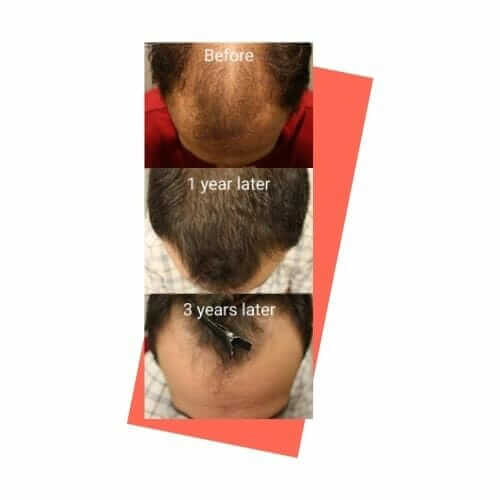
2- Unnatural hairlines that look odd
The whole point of going through a hair transplant surgery is restoring your natural looks, maybe even improving it.
Nobody wants a full head of hair with a twist of an unnatural-looking hairline.
Poor planning and poor practices can result in hairlines that look bad.
Why can this happen?
- Bad planning of the hairline (Inexperienced Physician and Clinic)
- Unnatural insertion of the grafts (Inexperienced Physician and Clinic)
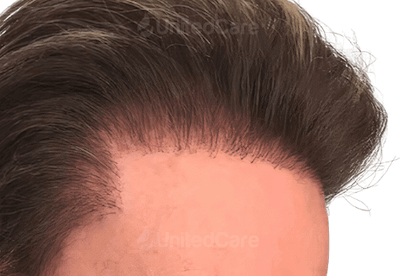
3- Visible scars in the donor area
In a hair transplant, the front section of your head shouldn’t be the only part you care about.
The back of your head is generally the subject of the operation. Grafts planted on the front of your head are harvested from here.
An inefficient harvesting process can result in permanent scars in this area.
Why can this happen?
- Overharvesting donor hair due to large balding area (Wrong Patient Selection)
- Ignoring the skin tissue of the patient (Inexperienced Physician and Clinic)
- Inefficient use of harvesting tools (Inexperienced Physician and Clinic)
- Use of the FUT Technique
(Which results in linear scar marks)
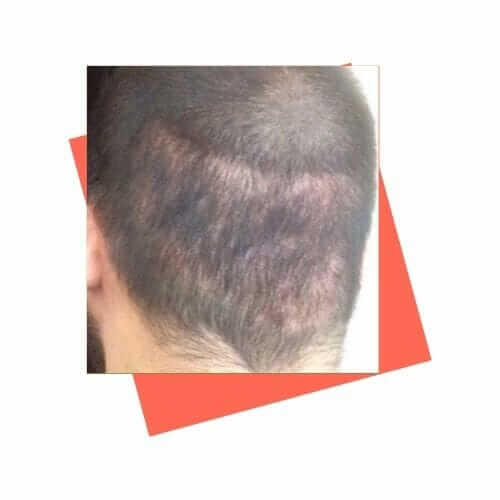
As these scenarios are frighteningly too common, you have to know how to avoid them to ensure success:
Going for Success: how do I ensure my hair transplantation doesn’t fail?
Now that we’ve seen all the reasons for hair loss and the results, let’s discover how to maximize your hair transplant success rate.
Of course, it all starts with the big choice:
Triple-check the experience and expertise of your clinic
Don’t hold back.
Ensure your clinic is experienced in hair and skin disorders, especially hair transplantations.
Ask for social proof, consult past patients, and check the clinic’s legitimacy online. Ask questions and learn how the process works.
If anything makes you doubt the clinic and can’t address these doubts, look for another clinic.
And make sure your physician knows what they’re doing.
Speaking of the physician:
Work with a Dermatologist
Not all hair transplant surgeons can be called “hair transplant doctors.”
Let me explain:
Dermatologists specialize in skin and hair disorders, and they’re the ones who should be doing hair transplantation surgeries for a successful outcome.
As a dermatologist, I can assure you there is always room for doubt if the physician you’re working with isn’t a dermatologist. Likely, they won’t be able to understand the reasons behind
Here’s why a dermatologist is your best option for hair transplant surgeries.
Be ready to change a few habits.
As I’ve said, if your hair transplant surgery went great, you’ll be the one that determines the success of the hair transplantation.
You need to give your body everything it needs to help it keep the transplanted hair follicles.
These include:
- Avoiding harmful habits such as excessive smoking and drinking,
- Eating balanced meals with plenty of raw vegetables and fresh herbs,
- Start regular exercising, even if it’s light.
Go with FUE (DHI is a modified FUE)
Most patients with scarring on their scalp after a hair transplant have unfortunately undergone a FUT surgery.
Follicular Unit Transplantation will take less time and is mostly cheaper, but the risks of having huge scars on the back of your scalp are significantly high.
Instead, they prefer the FUE method, where the surgeon must be more precise with the harvesting and implanting process to treat male pattern baldness.
Opt for Bio Enhancements, PRP, or even Stem Cell Transplants to boost success
There are a number of reasons your hair can fall out after the transplant is done, and none of them will be related to your existing reason for hair loss.
Mostly, they’re related to very poor care of your hair follicles and your scalp during and after the hair transplant.
Yes, during too.
Your hair follicles spend a considerable amount of time out of your tissues without any blood supply. This time can result in them not being able to achieve maximum strength after the surgery, which is why most expert surgeons and I at my operations at UnitedCare prefer bio enhancements to nourish follicles between harvesting and implantation.
And following the surgery, some clinics, including UnitedCare, help your follicles replenish and be strong by using PRP injections or the much better practice, stem cell therapy.
Also, to further increase your transplant’s success, we use the most advanced tools for each method.

Ensure Proper Post-Op Care
Many clinics prioritize financial gain, leading to technician crews, rather than renowned doctors, conducting the majority of hair transplant surgeries. Consequently, post-operation, most doctors may disengage. Your only recourse becomes online reviews, easily overshadowed by numerous fake 5-star ratings.
It’s impossible to know or research everything. Numerous crucial details may go unnoticed in the process. In an ethical clinic, a professional doctor upholding the Hippocratic Oath should attend to every detail, even preemptively addressing concerns before you voice them.
Before committing to a hair transplant with a clinic, ascertain their approach to post-operative care. Does their all-inclusive package cover post-op care? How promptly will they respond to your queries? Do they offer a reoperation guarantee if a failed result is attributable to them?
When choosing a clinic, make sure they address these issues that might cause the failure of your hair transplant through holistic approaches:
Why should you choose UnitedCare?
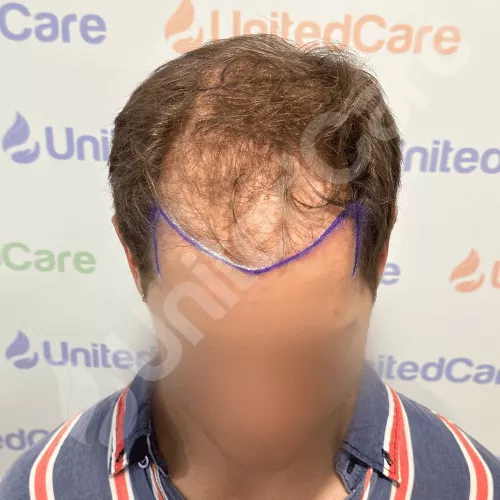
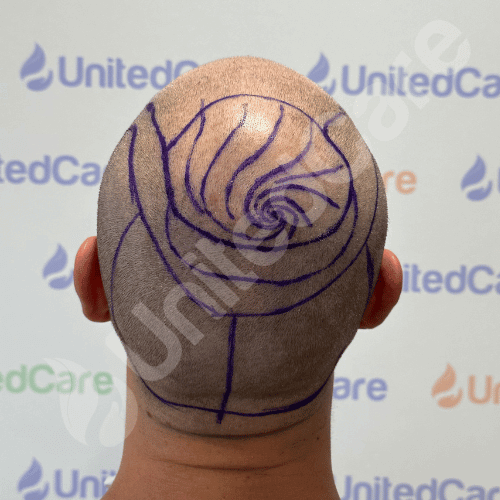
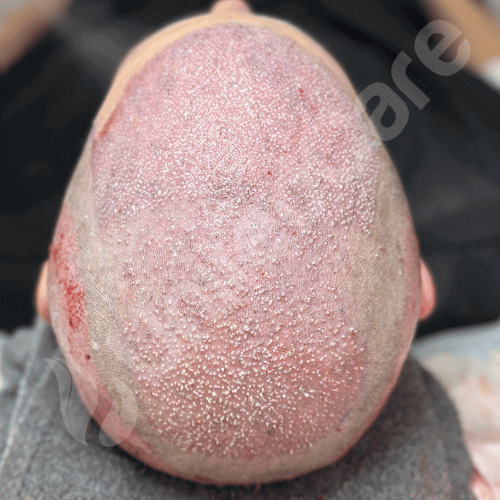
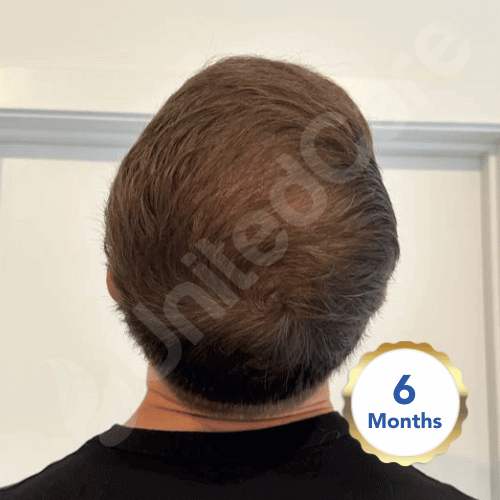
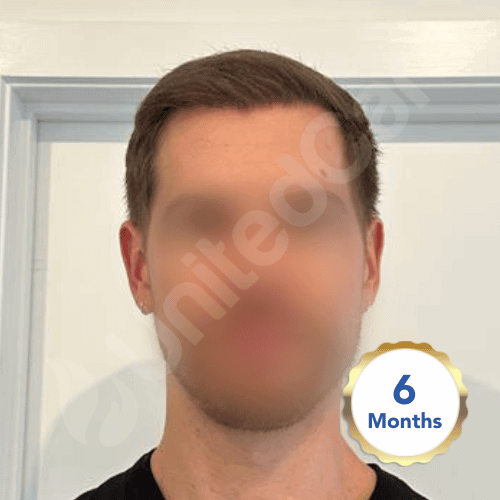
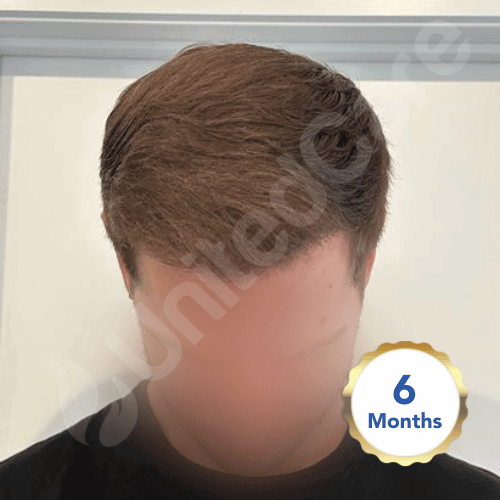
We started our dermatology clinic as two dermatologists who wanted to provide patients with a better way to restore their natural look.
In contrast to other clinics, cheap or expensive, we approach each patient with a holistic approach only applicable to dermatologists to understand the reasons for their hair loss, how we can help them with hair transplantation, and what they should do following the hair restoration procedure to improve their success rates.
Affordable hair transplant costs, a holistic approach, experienced dermatologists on-site, waiting to provide you with a permanent hair transplant.
Read more about how we take hair transplantation to the next level at UnitedCare, or contact us for a free consultation: 👇
Have a hair transplant without worrying about failure ever again.
UnitedCare’s dermatosurgeons are here to guarantee your hair a safe future.
Frequently Asked Questions (FAQs)
Why would a hair transplant fail?
Hair transplantation can fail due to 3 main reasons: selection of ineligible patients, indifference or ignorance of the physicians and/or the clinics, or the patient’s lack of self-care before and after the surgery.
What happens if a hair transplant fails?
A hair transplant failure means most grafts planted didn’t survive and fell out. In this case, hair loss still remains visible, and another hair transplantation would be required.
Do Hair Transplants last forever?
The transplanted hair follicles are usually much more long-lasting than your regular hair since they keep their DHT resistance property in the newly transplanted area. So yes, a successful hair transplant is a permanent solution that lasts forever if the operation and the follow-up are done right.
Does stress affect transplanted hair?
Stress is a factor that highly contributes to hair loss in the first place, so it would be natural to assume that high levels of ongoing stress, especially right after hair transplant surgeries, would affect the success of your hair transplant.
What age is good to get a hair transplant?
Anything above 25 years or older is perfect for getting a hair transplant if your alopecia has settled, meaning it isn’t aggressively progressing at the moment. Medications and remedies are suggested for patients younger than 25 or with aggressive alopecia since hormone levels are not yet settled at that age.
Do hair transplants look natural?
If an experienced surgeon executes the hair transplant procedure, it will look natural, and even experts couldn’t understand the existence of transplantation. However, it also depends on the method used. If you’re going for the DHI, a modified version of the FUE (Follicular Unit Extraction) technique that’s much more advanced and precise, you may end up with natural results, but the maximum number of transplanted grafts is limited to 3000-3500 in a session. However, going for FUT (Follicular Unit Transplantation) might decrease the natural appearance of the result since it leaves wide scars on the donor area.
Are body hair transplants successful?
For hair transplant procedures that use body hair instead of hair from the scalp, the success rate might go lower than normal, simply because the donor grafts are not the exact match of your scalp hair.



i had a hair transplant in the 90s and the hair did well ,it was the fut and i did have scare on the back of my head. i was in my ,early forty when i had my hair done and i was happy with the result . i still had bald area in back but the front was natural and look full . i am now 70 and the hair in the front has become short and thin a great deal in the last year . i have male patteren baldness ,but i am concern why my transplant are now thin and not growing . i though possible hypothyroid because my eye brow also were thin on the ends. i did not get thyroid test at fist ,started taking kelp for hypo thyroid , started rogaine which at first was helping then it appear to make it worse,,then started rogaine with finterside topically and even did prp on my self , 3 time . use to do blood in the office and i still had a centerfidge so i took my own blood and injected the platlet in to my head about 5 time over a 3 month peroid and see no results and i think the rogaine is making it worse. i did a blood test but my new doctor only does tsh,i had to get him to do tsh ,t3,4 reverse t3,sed rate and thyrogloblin antibody . test were with in normal range . not sure if kelp help my thyroid and improve reading or not. i was on lisinopril for years stop that.i am at a lost . i still have thick hair on the sides , my question to you why is rogaine making it worse ,PRP i really think this is more for a special group of peaple and not worth 2500,00 . can hair be transplant from side of hair now, and is there another reason medical cause the transplant hair all these years to stop growing and thin out . wayne
Hello Wayne,
The transplanted hairs are DHT sensitive, even if sensitivity is quite low compared to hairs on the front, mid-scalp, and crown. So, they can shed.
Also, aging occurs in the skin and causes hair loss. If we all live for 150 years, everyone will go bald. So it doesn’t have to be an internal disease; aging alone may cause serious hair loss.
Get your biotin, iron, and zinc levels checked and Complete Hemogram Test. No further test is required.
40-50% of Minoxidil users answer to its active ingredient. So if it’s not working, quit and try finasteride.
I recommend you take oral supplements and try mesotherapy along with PRP (at least 7-8 sessions).
Of course, another hair transplantation can be done. I need to see the donor area. A part of the side hair can also be used as a donor if necessary.
You need to share your photos so that I can evaluate your situation. You can reach my clinic and send your photos.
Best.